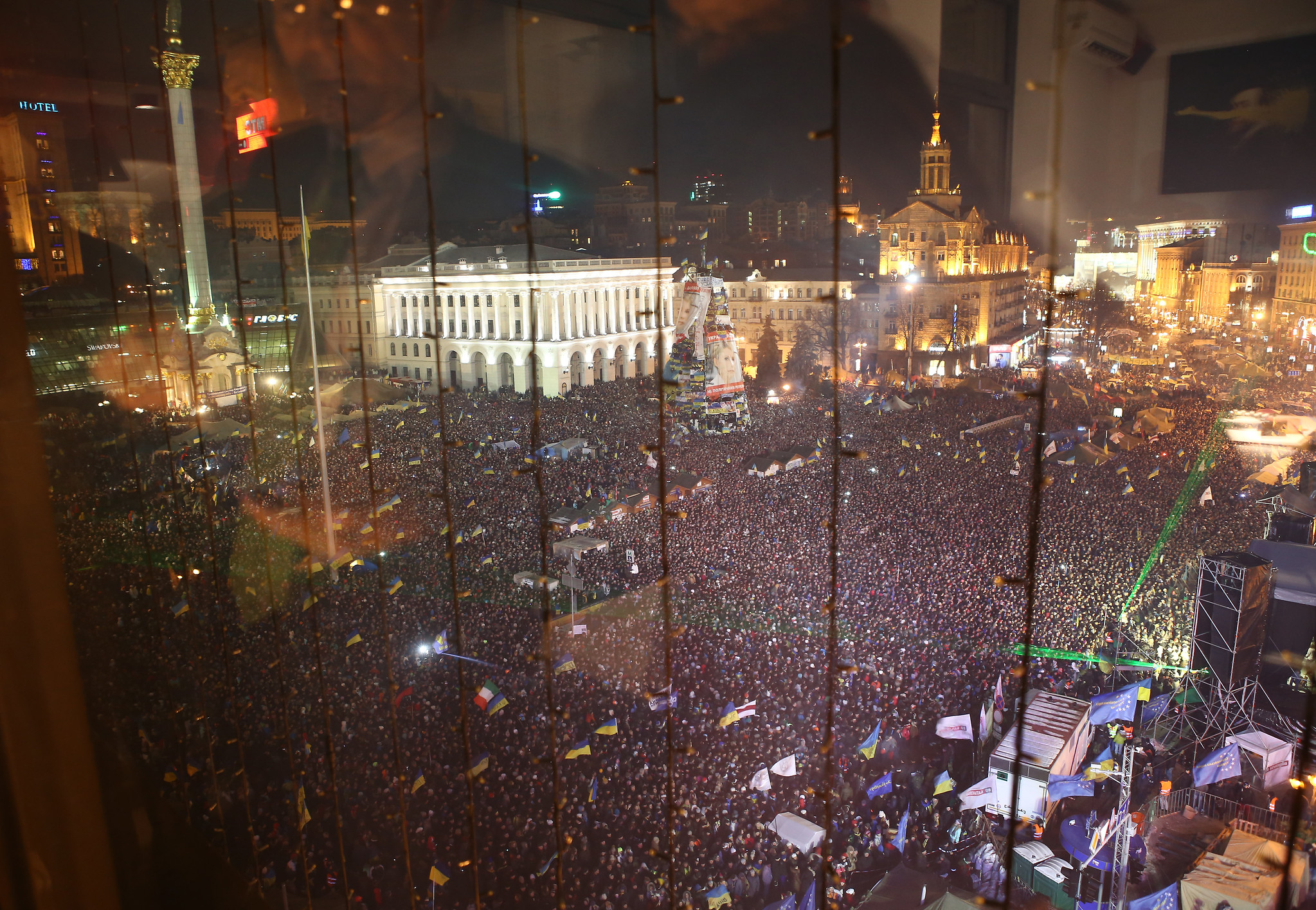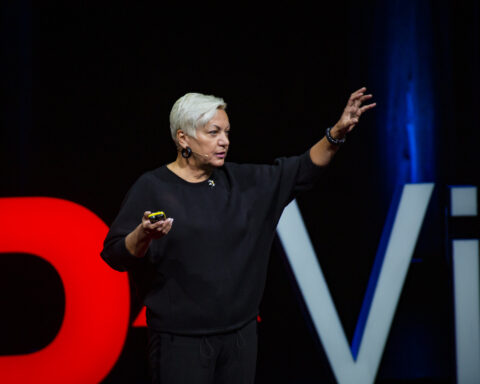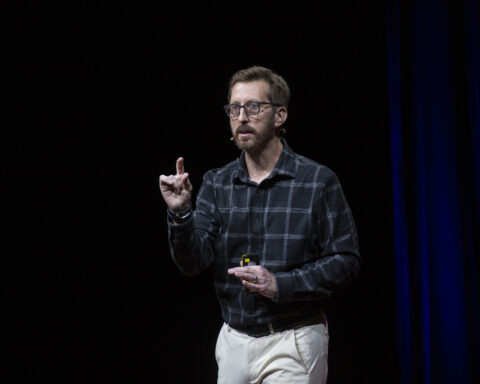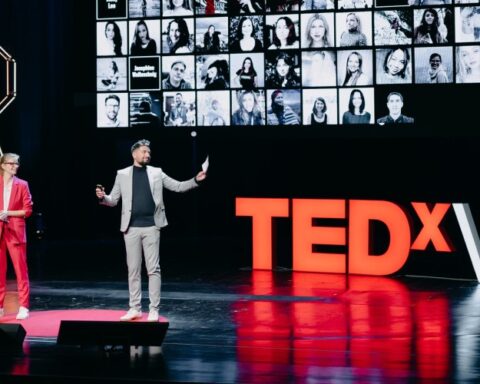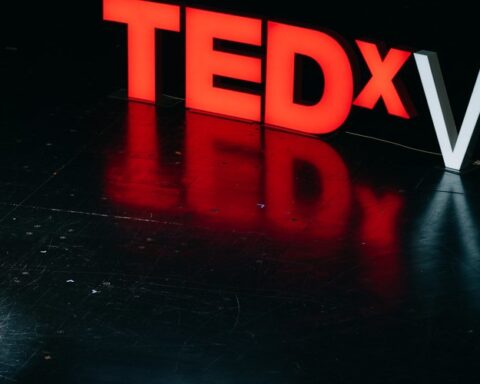During the TEDxVienna 2019 Conference “About Time” we listened to Kacey Wong, an artist from Hong Kong. His powerful talk was about protests in Hong Kong and how art can be a form of protest. He unites art and social activism. At the beginning of his speech, Kacey said: “My city is dying. It is at war with a much more powerful force than ours – it is a war on culture”.
His talk almost brought me to tears, because, as a Ukrainian, I could relate to it on many levels. I am a part of the generation, whose 2nd year at school was marked with the Orange Revolution of 2004-2005 and whose final year coincided with another revolution in 2013-2014. This revolution is now called the ‘Revolution of Dignity’ and the 21st of November marked the 6th anniversary of its beginning. We have “hot” winters in Ukraine from time to time.
Six years later, protesters in Hong Kong find parallels between Hong Kong and Ukrainian revolutionary experiences. Some protestors have even drawn inspiration from the film “Winter on Fire: Ukraine’s Fight for Freedom”.
You can find these slogans on the streets of Hong Kong: the writing on the helmet below reads “Glory to Hong Kong. Glory to the heroes. Glory to the people” in Ukrainian.
What happened during Maidan?

For us, it all started during the warm autumn of 2013. I was 16, in my senior year at school, choosing what I wanted to study at the university. People around me were enthusiastic, as we were waiting for the president Yanukovych to sign the Ukraine–European Union Association Agreement.
Everything changed with his refusal to sign it. The students gathered at the main square, Maidan in Ukrainian, in Kyiv to demonstrate. Soon after, other people joined them because of a Facebook post of a journalist, who called people to support the students. This shows, that the power of social media is a very youthful phenomenon, one that people who lead countries struggle to understand. What began as a peaceful rally, ended with a police crackdown on December the 1st.
I was there, at Maidan, and I saw it all with my own eyes.

I saw thousands of Ukrainians peacefully rallying for their future and I am proud to have been one of them. Actually, standing there on the main square, full of like-minded people, was one of the best experiences I have ever had.
Since then I associate the street protests with the smell of burning tires, a smell that permeated the whole city at that time. But it was absolutely wonderful to be amongst these united people, we all were in high spirits and believed we would win. And we did.
The timeline of the revolution
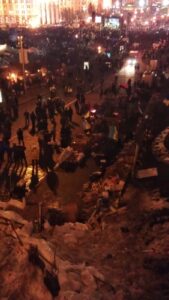
- 21st of November: The first students came to the main square in Kyiv to peacefully demonstrate. Soon after, people started gathering on the main squares in other major cities.
- 1st of December: A police crackdown, students were beaten. A lot of people joined the demonstration, protesters from all over the country rallied to the capital.
- 16th of January: the Ukrainian parliament declared the adoption of dictatorial anti-protest laws, which restricted the freedom of speech and assembly. These led to the riots on Hrushevskoho Street.
- 19th of January: The special police force, the “Berkut” used water-jets against the protesters for the first time. They used ice-cold water on a day when the orthodox Christians celebrate the Baptism of Jesus. Ironically, on this day people traditionally immerse themselves into ice-holes specially made on rivers (to repeat the baptism of Jesus in the Jordan river). As a consequence, the riots got more severe.
- 22nd of January: Unity Day, the first two people were shot by the riot police.
This was the moment, when we realized, that it would not be peaceful anymore.
What began as a protest with smiles and friendliness, a protest where one could get a tea and a blanket to warm oneself, soon turned into a nation–wide riot.
- 19th of February: With the protests still ongoing, suddenly, out of the blue, snipers started shooting people right in the center of the city. On that fateful day, 67 people were killed by gunfire, 184 sustained gunshot wounds and over 750 suffered serious bodily harm.
We saw the shooting live on TV and nobody expected something like that would happen. During the duration of the revolution, a reported 130 people died, they are now remembered as “the Heavenly Hundred”. The whole country was devastated and there was no way back.
- 22nd of February: the Parliament voted for the impeachment of Yanukovych, who fled the next day.
This was the end of the ‘Revolution of Dignity’ and this freezing cold winter, because, surprisingly, it suddenly got very warm and sunny. I don’t think I will ever forget my feelings back then.
But it was just the beginning of another story altogether, as we still fight: Russia annexed the Crimean peninsula and the war continues in the east of my country.
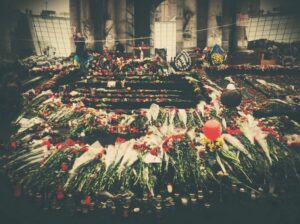
Being an adolescent, when there is revolution in your country is difficult.
While other 16 year olds were thinking about exams, which university to apply for and what to wear to the prom, we had to deal with much more complex and adult questions.
The feeling amongst my peers was one of uncertainty. We were (and still are), unsure what will happen to our country. This made it somewhat difficult to think about your own future.
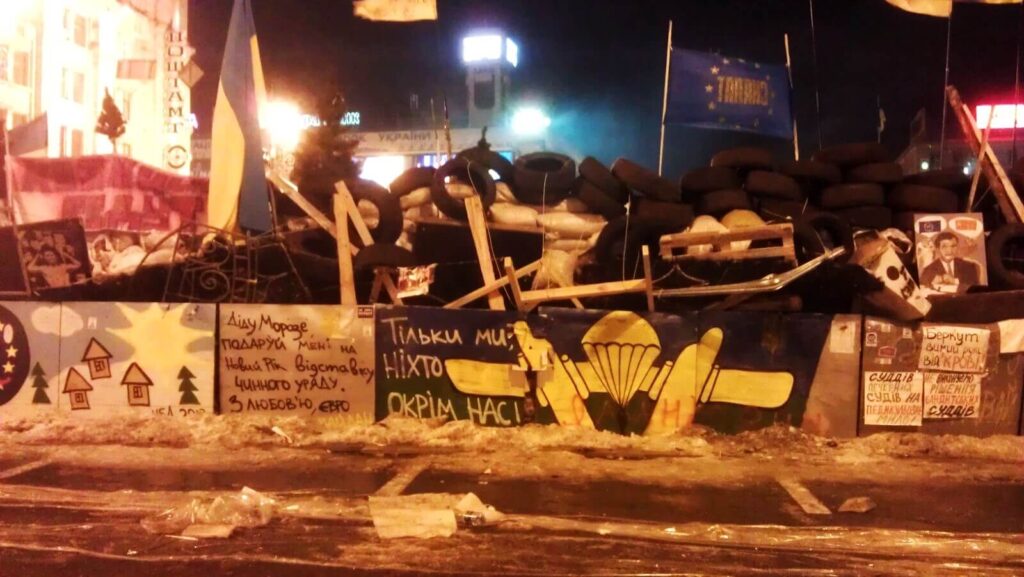
However, life went on. Even with the center of Kyiv burning, the restaurants on neighbouring streets were open, concerts still took place. We went to school, adults went to work. But we were all glued to our phones, checking the news every 2 minutes.
Along with getting ready for our finals, we, school children and parents alike, raised funds and gathered supplies for those camped on Maidan. I remember falling asleep to the sound of Molotov cocktails exploding, stones being thrown, to the screams of the people from the streets as well as from the TV because the news was on 24/7. Since then, the whole country is used to awaiting bad news.
Our school strictly forbade us to go to Maidan and they checked where we were.
They forbade us to talk about the revolution and pretended nothing was happening. Meanwhile, a mere 2 kilometers away, tires were burning and we could hear everything. They were afraid and confused.
We were just a bunch of 16-year-old protesters, who didn’t care about the rules. While normal teenagers rebelled against their parents or teachers, we took our rebellious spirit further. Once we collectively lied to our teacher that a classmate of ours was out to see a doctor. Later that day we found a picture of him throwing stones at the police in the news. Another day, we had to desperately scrub a classmate clean because he was covered in smut from burning tires after helping protestors before class.
We felt really adventurous.
One day the public transport in Kyiv, a city with 4 million people, stopped as ordered by the city authorities to help the police to disperse the protesters. A lot of my classmates couldn’t get home, so we collaborated and hosted each other. At that moment, we were very helpful and looked out for each other. However, we couldn’t find one of our friends. All we knew was that he went to the Maidan. Later he told us that the tent he was in had been burnt.
When the revolution ended in February, we were not allowed to have a minute of silence for our fallen heroes. The school administration was still afraid and denied what was happening. However, our graduation at the end of May, just after the presidential election, started with this minute of silence. I did not know how to react to this hypocrisy.
To this day, I ask myself, what this school could teach us.
After seeing dozens of coffins being brought to the main square of my town and the people chanting “The heroes don’t die, the heroes go to heaven”, I couldn’t comprehend, how the school administration did not take more action.
The school, as a product of a broken system, did not provide us with enough skills to be active, reflective citizens.
My classmates and I were young and naïve maximalists, but we wanted to help our country, we had the courage and hope. By prohibiting everything connected to the revolution, the school administration only encouraged us to take part in everything happening there.
But this was not the right tactic. In this day and age, trying to protect the youth by hiding news from them is not only impossible, but a dated ideal, as the youth is on of the most active parts of any society. A remarkable example of this is the ‘Fridays for Future’ movement. One of the speakers at the TEDxVienna “About Time” conference, a 17-year-old activist Franziska Marhold, explained why there should not be any Fridays for Future demonstrations, but the reason they take place is simple: the politics doesn’t give the young generation any choice, other than fight for their future.
This is why we should encourage children’s and teenagers’ interest in politics, the environment and the other parts of life. They are not too small or stupid for complex themes. They, as we did, understand a lot and they can change a lot, if they are only given the opportunity.
Our revolution started when a bunch of students went to the main square to a peaceful demo.
All they did was sing songs, and yet they got beaten up by the police. This proved to be the point of no return. John F. Kennedy once said: “Those who make peaceful revolution impossible will make violent revolution inevitable”. This is exactly what happened in Ukraine.
This is why we should teach kids how to be conscious citizens, why you should choose wisely in elections, how being apolitical can be harmful and that a peaceful demonstration is our democratic right.
Six years later, my country is still at war. We still fight for our future, and just as Kacey Wong said, “if we win this war, our prize will be humble: we get to keep our language and our way of life, but if we lose, everything will change.”
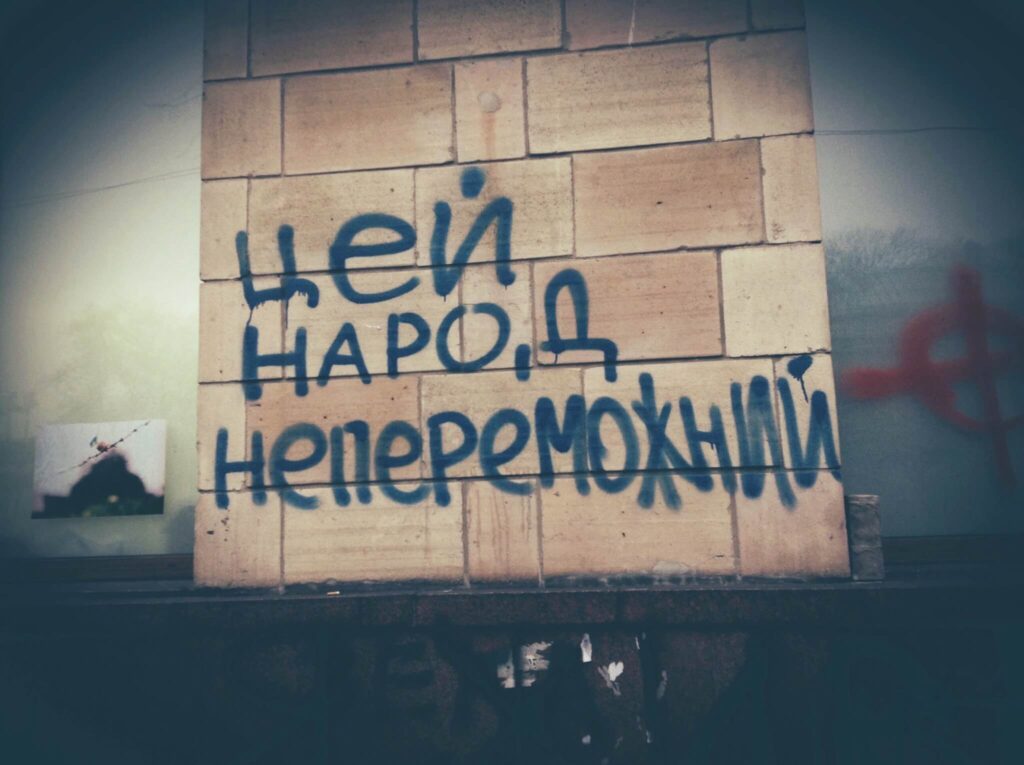
Header Image: U.S. Embassy Kyiv, Ukraine via flickr

